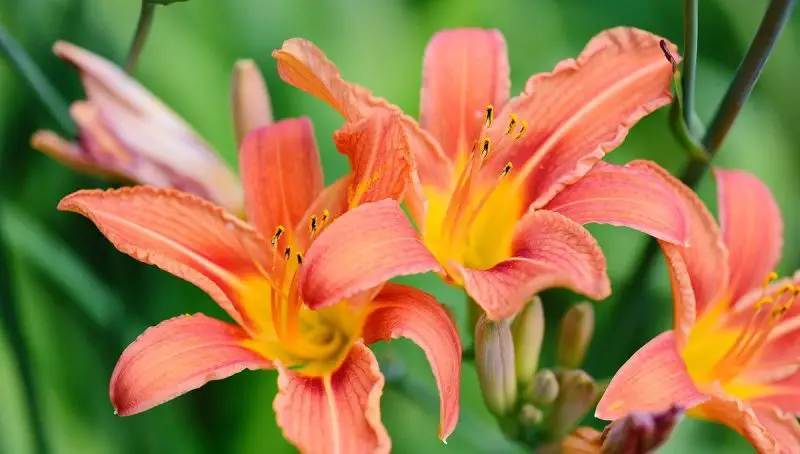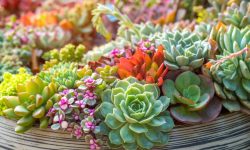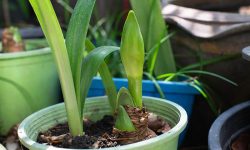Wondering if daylilies attract bees? Discover how daylilies impact pollinators, which varieties bees prefer, and how to plant them to support a bee-friendly garden.
Do Daylilies Attract Bees?

Bees play a crucial role in the pollination process for many flowering plants, and daylilies are no exception. These vibrant and resilient flowers can serve as a valuable food source for various bee species. While not all daylilies produce a large quantity of nectar, many varieties still offer enough to draw in bees, especially when planted in clusters throughout a garden.
Among the most frequent visitors to daylily blooms are honeybees, bumblebees, and solitary bees. These pollinators are attracted to the flower’s color, shape, and the presence of nectar or pollen. While some bee species might prefer flowers with stronger scents or greater nectar output, daylilies still contribute positively to the pollinator ecosystem and are worth considering if you’re looking to enhance bee activity in your garden.
Adding daylilies to your landscape not only brightens up the space with vivid colors but also supports local pollinators. With minimal care requirements and a long blooming period, daylilies offer gardeners an easy way to create a bee-friendly environment that thrives season after season.
Do Yellow Daylilies Attract Bees?
Bees are naturally drawn to yellow flowers because of their ability to perceive ultraviolet (UV) light. Many yellow blooms, including yellow daylilies (Hemerocallis fulva), contain UV nectar guides that lead bees toward the center of the flower where nectar and pollen are located. These invisible UV patterns help bees quickly identify rewarding flowers in the landscape.
Yellow daylilies are a popular choice among gardeners not only for their cheerful color but also for their effectiveness in attracting pollinators. The large, open petals of yellow daylilies provide an accessible landing platform for bees, making them especially attractive to larger pollinators such as bumblebees. When multiple yellow daylilies are grouped together, they can create a strong visual cue that encourages repeated bee visits.
In addition to daylilies, other yellow flowers like sunflowers, zinnias, cosmos, and marigolds also appeal to bees. Planting a variety of bright, UV-reflective blooms will help you create a diverse, thriving garden full of buzzing pollinators.
What Flowers Attract the Most Bees?
While daylilies do attract bees to some extent, other flowers are even more effective at drawing in large numbers of pollinators. Bees prefer flowers that provide abundant nectar and pollen, as well as those that emit strong scents and have bright colors. Some of the best flowers for attracting bees include clover, lavender, dandelions, bee balm, borage, echinacea, and sunflowers.
Bees are especially fond of native and heirloom plant varieties because they often produce more nectar than modern hybrids. Flowers with open structures and a high contrast between their petal color and center make it easier for bees to locate the food source. The fragrance of the flower also plays a major role in attracting bees from afar.
If your goal is to support local pollinators, consider planting a mix of bee-friendly flowers that bloom throughout the growing season. This will provide a continuous food source for bees and increase pollination across your garden.
Why Are Bees Not Attracted to My Daylilies?
If you’ve planted daylilies and notice bees avoiding them, several factors could be to blame. First, not all daylily cultivars produce nectar or strong scents that appeal to bees. Hybrid varieties, especially those bred for showy blooms rather than ecological benefit, may have less nectar or inaccessible floral structures that make it difficult for bees to forage.
Environmental conditions can also impact bee behavior. Bees are less active during cold, rainy, or windy weather. If your daylilies bloom early or late in the day, they may miss the peak foraging hours of nearby bees. Additionally, a lack of other pollinator plants in your area may reduce the overall number of bees visiting your garden.
Soil quality, pesticides, and habitat fragmentation can further deter bee populations. To encourage more bee visits, try supplementing your garden with native, nectar-rich flowers and avoid using chemical sprays that may harm pollinators.
What Plants Do Not Attract Bees?
Some plants are simply less attractive to bees due to their low nectar output, scent, or flower structure. Common garden flowers like impatiens, petunias, begonias, and marigolds are often overlooked by bees, despite their vibrant appearance. These plants may not provide enough reward in terms of nectar or may lack the UV patterns bees use to identify flowers.
In some cases, ornamental varieties of flowers have been bred more for appearance than ecological value, leading to a reduced ability to support pollinators. Plants that contain natural insect-repelling compounds or that produce toxic nectar may also be avoided by bees.
For gardeners looking to limit bee activity near patios or play areas, choosing these less attractive flowers can be a practical approach. However, it’s important to balance aesthetics with biodiversity when planning your landscape.
Potted Plants That Don’t Attract Bees
If you’re gardening in containers and want to avoid attracting bees, there are several potted plant options to consider. Choose plants that produce little to no nectar and that bees find unappealing. African violets, ferns, impatiens, and coleus are excellent choices for indoor or shaded patios and are generally ignored by bees.
Fragrant herbs like rosemary, sage, and lavender are sometimes avoided due to their strong scents, especially when in non-flowering stages. Plants with fuzzy leaves, such as lamb’s ear, may also discourage bee landings. These features can make your potted plant arrangements more comfortable for humans while minimizing bee traffic.
If needed, you can further reduce bee attraction by placing pots in shaded or screened areas and avoiding fertilization practices that encourage flowering. This is particularly useful in high-traffic spaces like balconies or seating areas.
Flowers That Don’t Attract Bees and Wasps
Certain flowers repel both bees and wasps due to the lack of attractive nectar, their chemical composition, or the structure of their blooms. Flowers like geraniums, petunias, and marigolds are known to be poor sources of nectar and are less likely to invite pollinators into your garden.
Some of these flowers emit chemical compounds that naturally repel insects. For instance, marigolds are often planted to deter garden pests due to their strong scent. Others, like impatiens, simply don’t offer enough nutritional value to make them worth a visit for bees or wasps.
While these flowers can still add color and interest to your garden, they’re ideal for spaces where you want to minimize insect activity. Be sure to pair them strategically with other pollinator-friendly species elsewhere in your garden to maintain ecological balance.
Where Should I Plant Daylilies in My Garden?
The best location for planting daylilies depends on both sunlight and soil conditions. Daylilies thrive in areas that receive at least six hours of direct sunlight per day. Full sun encourages stronger blooms and more vibrant flower colors. However, in regions with intense summer heat, providing light afternoon shade can help prevent flower scalding and keep the plants healthier.
Soil quality also plays a major role in the health and attractiveness of your daylilies. These plants prefer well-drained soil that is rich in organic matter. If your garden has heavy clay or sandy soil, improve it by mixing in compost or aged manure to help with water retention and root development.
When planting daylilies, space them about 18–24 inches apart to allow for proper air circulation. Ensure that the crown of the plant sits just at soil level, and water well after planting. With the right location and care, your daylilies will flourish and may become a key attraction point for pollinators in your garden.
Conclusion
While daylilies may not be the top nectar source for bees, they still contribute to a healthy pollinator-friendly garden, especially when combined with other flowers that provide ample food for bees. Yellow daylilies, in particular, attract bees due to their UV reflectivity and accessible floral structure. However, factors like weather, cultivar selection, and garden diversity can all affect bee activity.
For gardeners interested in supporting pollinators, planting a range of nectar-rich flowers alongside daylilies ensures a thriving, buzzing garden. Whether you aim to attract bees or minimize their presence, understanding what flowers appeal to them will help you create a harmonious garden ecosystem.






